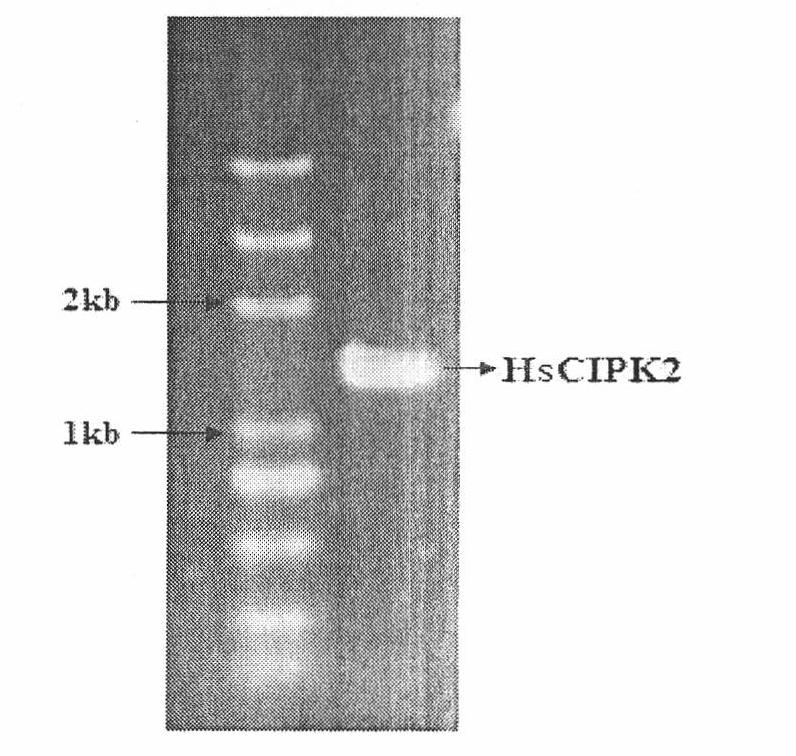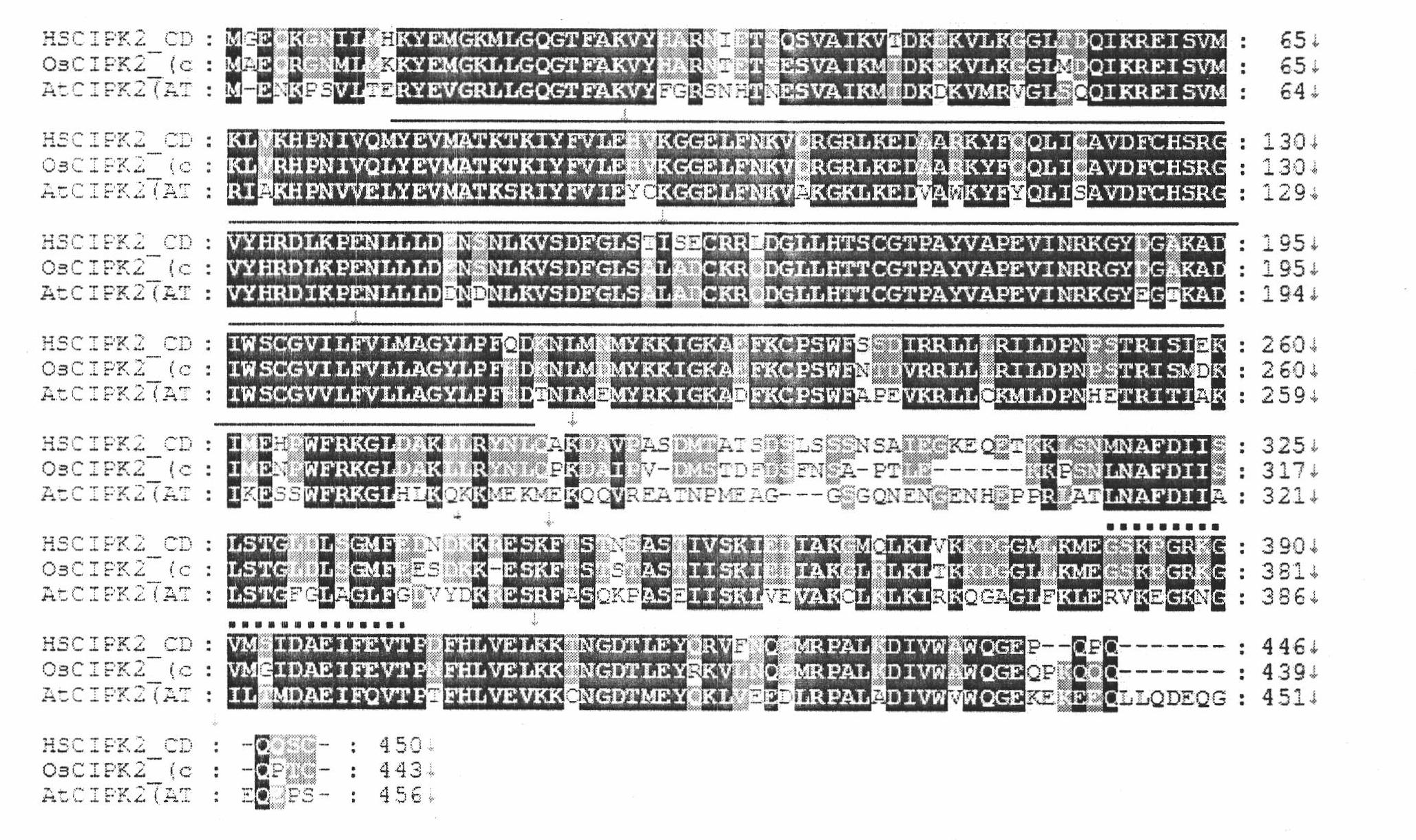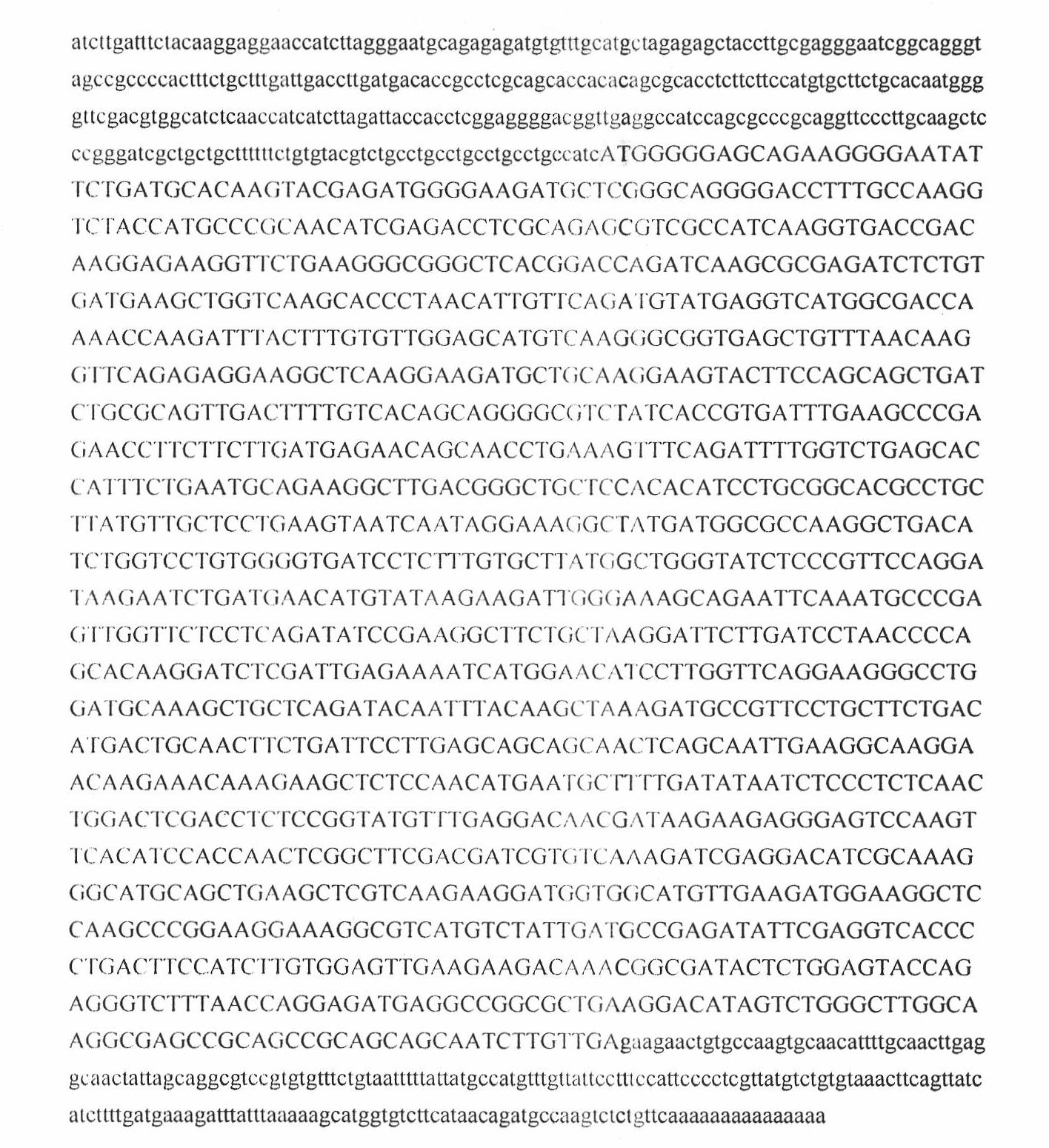HsCIPK2 gene of Hordeum spontoneum C. Koch on Tibetan Plateau
A barley, wild technology, applied in the field of genetic engineering
- Summary
- Abstract
- Description
- Claims
- Application Information
AI Technical Summary
Problems solved by technology
Method used
Image
Examples
Embodiment 1
[0024] Example 1 Obtaining of the full sequence of the HsCIPK2 gene
[0025] 1.1 Design primers (the underlined sequence is the restriction site):
[0026] HsCIPK2-SacI-F:TCC GAGCTC ATGGGGGAGCAGAAGGGGAATATTCTGAT
[0027] HsCIPK2-XbaI-R:ACT TCTAGA TCAACAAGATTGCTGCTGCGGCTGCGGC
[0028] Table 1 reaction system
[0029]
[0030] Table 2PCR reaction parameters
[0031] number of cycles
temperature(℃)
time(s)
temperature(℃)
time(s)
temperature(℃)
time(s)
1
94
180
-
-
-
-
30
94
30
60
15
72
60
1
72
600
-
-
-
-
[0032] 1.2 Experimental results
[0033] 1.2.1PCR results
[0034] Get PCR product 5ul electrophoresis, obtain a clear band about 1.3kb, its size is similar to the fragment size of the CIPK2 gene of known rice and Arabidopsis ( figure 1 ), it can be preliminarily considered that the desired target DNA fragment h...
Embodiment 2
[0037] Example 2 Obtaining of HsCIPK2 Gene Regulatory Sequence
[0038] 2.1 Design primers:
[0039] SP1: ACGGTGATAGACGCCCCTGCTGTGACA
[0040] SP2: AAGTACTTCCTTGCAGCATCTTCCTTG
[0041] SP3: TGACATGCTCCAACACAAAGTAAATCTTGG
[0042] AD1 Primer: NTCGASTWTSGWGTT
[0043] AD2 Primer: NGTCGASWGANAWGAA
[0044] AD3 Primer: WGTGNAGWANCANAGA
[0045] AD4 Primer: TGWGNAGSANCASAGA
[0046] AD5 Primer: AGWGNAGWANCAWAGG
[0047] AD6 Primer: STTGNTASTNCTNTGC
[0048] 2.2 Thermal asymmetric PCR (thermal asymmetric interlaced PCR, TAIL-PCR)
[0049] TAIL-PCR is a kind of random primer PCR. Random primer PCR is to bind a specific primer to the known gene region, and the random primer is combined to a certain region next to the known region, thereby triggering the gene including the known region. Amplification of fragments. The principle of TAIL-PCR technology is: using genomic DNA as a template, using three nested specific primers (special primers, SP) with higher annealing temperatur...
Embodiment 3
[0064] Embodiment 3 The technical route adopted by the present invention is as Figure 6 Shown:
[0065] 1. According to the relevant literature, search and obtain the known CIPK2 gene sequence in other species of Gramineae (such as rice, wheat, sorghum, corn) from various databases, and according to the coding rules and arrangement of exons and introns Search and locate the open reading frame ORF (open read frame), and then obtain the complete coding sequence CDS (codingsequence).
[0066] 2. Use the complete or partially conserved sequence of OsCIPK2 as a probe to search and compare (nBlast or tBlastn) various nucleotide sequence libraries of barley, and speculate that a sequence with higher homology may be part of HsCIPK2 in wild barley sequence, the sequence is listed as the seed sequence for the next step of electronic assembly and extension.
[0067] 3. Using the seed sequence as a probe, repeatedly search the above database, save the retrieved homologous sequence to th...
PUM
 Login to View More
Login to View More Abstract
Description
Claims
Application Information
 Login to View More
Login to View More - R&D
- Intellectual Property
- Life Sciences
- Materials
- Tech Scout
- Unparalleled Data Quality
- Higher Quality Content
- 60% Fewer Hallucinations
Browse by: Latest US Patents, China's latest patents, Technical Efficacy Thesaurus, Application Domain, Technology Topic, Popular Technical Reports.
© 2025 PatSnap. All rights reserved.Legal|Privacy policy|Modern Slavery Act Transparency Statement|Sitemap|About US| Contact US: help@patsnap.com



